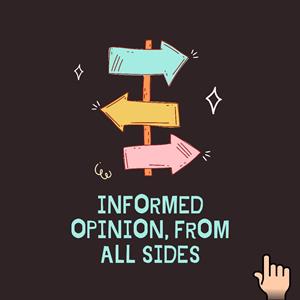Explained: What constitutes ‘noise’, and how can noise pollution harm you?
The political controversy in Maharashtra over the demand to remove loudspeakers from mosques raises some fundamental questions regarding noise pollution. What do the Rules say in this regard?
 Maharashtra Navnirman Sena (MNS) chief Raj Thackeray addresses a press conference in Pune, Sunday, April 17, 2022. (PTI Photo/File)
Maharashtra Navnirman Sena (MNS) chief Raj Thackeray addresses a press conference in Pune, Sunday, April 17, 2022. (PTI Photo/File)An ultimatum by Raj Thackeray, president of the Maharashtra Navnirman Sena (MNS), that repercussions would follow if speakers on mosques were not removed by May 3, has created political turmoil in the state. The Maharashtra government is relying on provisions of The Noise Pollution (Regulation and Control) Rules, 2000 to negotiate the controversy over the use of loudspeakers by mosques. What do the Rules say?
What constitutes ‘noise’ under the law?
As per the Central Pollution Control Board’s mandate for noise pollution, ‘noise’ is defined as unwanted sound. Sound, which pleases the listener, is music and that which causes pain and annoyance is noise. At times, what is music for some can be noise for others. Any unwanted sound that causes annoyance, irritation and pain to the human ear is termed ‘noise’.
What do The Noise Pollution (Regulation and Control) Rules, 2000 say?
Section 2 (a) of the Air (Prevention and Control of Pollution) Act, 1981 includes noise in the definition of ‘air pollutant’.
Noise pollution and its sources are regulated under The Noise Pollution (Regulation and Control) Rules, 2000 under The Environment (Protection) Act, 1986. The Act has defined ambient acceptable noise levels, silence zones, restrictions on the use of loudspeakers, horns, sound-emitting construction equipment, and bursting of crackers.
It has also laid down the responsibility for enforcement.
What is the threshold for acceptable level of noise?
Noise pollution Rules have defined the acceptable level of noise in different zones for both daytime and nighttime. In industrial areas, the permissible limit is 75 decibels (unit of sound; tenth of a ‘bell’, symbol dB) for daytime, and 70 dB for night.
Daytime is defined as the period from 6 am to 10 pm, and night is 10 pm to 6 am of the following day.
In commercial areas, these ceilings are fixed at 65 dB and 55 dB, while in residential areas they are 55 dB and 45 dB during daytime and night respectively.
In silence zones, i.e., an area comprising not less than 100 metres around hospitals, educational institutions and courts, it is 50 dB in the daytime and 40 dB during the night.
What are the rules around the use of loudspeakers?
The noise level at the boundary of the public place, where a loudspeaker or public address system or any other noise source is being used, shall not exceed 10 dB (A) above the ambient noise standards for the area or 75 dB (A), whichever is lower.
The rules also state that a loudspeaker or a public address system shall not be used except after obtaining written permission from the designated authority. The state government can provide exemption during any cultural or religious festive occasion of a limited duration not exceeding 15 days in all during a calendar year.
In a report filed with the National Green Tribunal (NGT) on June 12, 2020, the Central Pollution Control Board (CPCB) listed fines for the violation of noise pollution norms.
The violation of norms regarding the use of loudspeakers/public address systems can result in seizure of the equipment, and a fine of Rs 10,000.
What are noise levels like in Maharashtra?
The 2020 Noise Monitoring report by the state Pollution Control Board (PCB) showed that noise levels at many places exceeded the laid down noise norms for Industrial, Commercial, Residential or Silence zones.
The ever-increasing use of automobiles is a major cause of this pollution. People honk unnecessarily in the traffic and listen to loud music on the way, which creates high levels of noise.
In 2017, a report highlighted that Delhi and Mumbai were in the list of the worst cities across the globe in terms of noise pollution.
In Mumbai, a total of 15 locations were monitored. The highest noise level during the daytime on February 21 and 22, 2021 was observed at 76.8dB (A) at Santacruz Airport and 77.9db (A) at Goregaon East respectively. During nighttime, the highest noise level on February 21 was observed at Antop Hill at 65.0dB(A), and on February 22 it was at Santacruz Airport at 69.7dB (A).
How can noise pollution impact health?
While noise pollution does not receive as much attention as air and water pollution, it is known to impact the health of people. According to the World Health Organisation (WHO), about 1.1 billion young people (aged between 12–35 years) are at the risk of hearing loss due to noise exposure.
The WHO has stated that there is sufficient evidence that noise exposure at night causes self-reported sleep disturbance and noise-induced sleep disturbance is viewed as a health problem. WHO also states there is evidence, albeit limited, that disturbed sleep causes fatigue, accidents and reduced performance.
Various physical disorders due to higher noise include temporary deafness, headache and an increase in blood pressure.
Newsletter | Click to get the day’s best explainers in your inbox
- 01
- 02
- 03
- 04
- 05







































